Table of Contents
- Introduction
- 1. What Really Defines a High-Quality Vaporizer?
- 2. Materials Matter – From Flavor to Safety
- 3. Airflow Design and Draw Resistance
- 4. Heating Methods: Conduction, Convection, and Hybrid
- 5. Flavor and Terpene Expression
- 6. Efficiency, Control, and Dose Flexibility
- 7. Craftsmanship, Repairability, and Lifespan
- 8. Why Design Philosophy and Brand Ethos Matter
- Conclusion
- About the Author
The Ultimate Vaporizer Buying Guide: What to Look for in a High-Quality Vape
Not all vaporizers are created equal. Some promise big clouds but fall short on flavor. Others look sleek but use cheap materials. And too many leave you wondering if you’re truly getting the most from your herbs.
Whether you’re a beginner or upgrading your ritual, this guide will walk you through everything that defines a truly high-quality dry herb vaporizer — especially if you’re drawn to analog craftsmanship and mindful use.
We’ll explore what matters most: materials, airflow, heating type, flavor, efficiency, and design ethos. You'll also learn why flame-powered devices like the Vapman Click and Lotus Vaporizer are leading a quiet revolution in the vaporization space — by offering purity, simplicity, and full sensory control.
1. What Really Defines a High-Quality Vaporizer?
It’s not just about price or features. A great vaporizer performs across multiple dimensions — delivering clean, flavorful vapor with consistency, ease, and longevity. It should feel natural in the hand, intuitive in use, and reliable for years.
Here’s what to evaluate:
- Build materials: Are they safe, durable, and taste-neutral?
- Airflow and draw resistance: Does it suit your breath style?
- Heating method: Conduction vs convection vs hybrid
- Vapor quality: Smoothness, density, and flavor clarity
- Efficiency: Can you microdose, sip, or stretch a bowl?
- Repairability and sustainability: Does it age well?
- Philosophy: Is it a tool for convenience — or for presence?
Whether you’re looking for power, portability, ritual, or all three, this guide will help you choose a device that supports your goals — and enhances your inhale with every session.
2. Materials Matter – From Flavor to Safety
The materials in your vaporizer affect more than durability — they directly influence health, taste, and heat distribution. Low-grade materials can off-gas under high temperatures, degrade over time, or muddy the flavor profile of your herbs.
What to look for:
- Stainless steel and copper: Great for heat retention and purity. Vapman’s gold-plated copper bowl, for example, ensures fast, clean conduction without hotspots.
- Borosilicate glass: Flavor-neutral and easy to clean — ideal for stems, J-hooks, and mouthpieces
- Wood: Natural insulator with aesthetic and tactile appeal. Cherry, walnut, or olive wood age beautifully and add ritual to the device.
- Mica or ceramic insulators: Heat-resistant, safe, and free from synthetic coatings
What to avoid:
- Plastic vapor paths, silicone tubing near heating elements, low-grade solder
- Uncoated aluminum in direct heat exposure zones
A vaporizer made with premium materials tastes better, lasts longer, and protects your breath. It’s worth investing in a build that respects both user and herb.
3. Airflow Design and Draw Resistance
Airflow may sound technical, but it’s one of the most personal parts of vaporizer performance. A device’s internal architecture determines how easily air moves through the chamber — which affects vapor density, flavor release, and user comfort.
Good airflow design means:
- Low draw resistance: You can sip the vapor without strain
- Adjustable flow: Devices like the Vapman Click let you control resistance manually
- Unrestricted vapor path: Fewer bends, gaps, or areas that collect debris
Manual devices often offer greater tactile feedback, allowing the user to adjust flame, breath, and intake in real-time. With a bit of practice, you can fine-tune your draw to get smooth, flavorful vapor — even from a tiny dose.
Pro tip: Add accessories like a cooling spiral or J-hook to extend airflow and refine the mouthfeel of each hit.
4. Heating Methods – Conduction, Convection, and Hybrid
Every vaporizer uses one of three heat strategies — each with its strengths:
Conduction
Herbs touch a heated surface (like a pan or bowl). Fast and efficient — ideal for small doses. Vapman’s conduction system uses gold-plated copper to evenly distribute heat in seconds.
Convection
Hot air moves through the herbs to extract compounds. Excellent for full flavor and low-temp sessions. Lotus uses convection heating via its patented cap — perfect for long draws and thick clouds.
Hybrid
Combines conduction and convection. Offers speed + spectrum. Many analog and high-end digital units fall into this category.
Which is best? It depends on your preferences. For microdosing, speed, and control, conduction (like Vapman) is ideal. For long sessions, flavor exploration, and water pipe use, convection (like Lotus) excels.
5. Flavor and Terpene Expression
Flavor is one of the most overlooked — but most revealing — markers of vaporizer quality. A high-quality device lets you taste your herb: its citrus notes, earthy undertones, floral hints, and spicy complexities. A bad one? You’ll taste heat, plastic, or burnt dust.
What enhances flavor?
- Clean vapor path: No plastic, adhesives, or unnecessary turbulence
- Low-temp control: Lets you preserve delicate terpenes like limonene or linalool
- Inert materials: Gold, copper, stainless steel, mica, and glass preserve purity
Manual devices like Vapman and Lotus are especially good at terpene expression — partly because they allow for shorter sessions, precise timing, and cooler draws.
Pro tip: Stir halfway through your session to access different flavor layers — from top notes to base effects.
6. Efficiency, Control, and Dose Flexibility
A high-quality vaporizer doesn’t just extract well — it does so efficiently. That means less herb, more effect. You should be able to stretch a tiny bowl over several hits or rounds without waste or combustion.
Look for:
- Small bowl size: Devices like Vapman are ideal for 0.02–0.05g sessions
- Full extraction: You should see tan or light brown AVB (already vaped bud) — not green or black
- Flexible use: Works for both microdosing and deep sessions depending on temp and airflow
Efficient vaporizers also give you the freedom to pause and return later. With convection or hybrid models, you can extract in layers — starting low and working up through the spectrum.
This means less herb, more sessions, and a more customized effect profile — whether you’re waking up, working, or winding down.
7. Craftsmanship, Repairability, and Lifespan
A good vaporizer should last for years, not months. Quality build means fewer headaches, better performance over time, and reduced environmental impact.
What to prioritize:
- Modular parts: Can you replace screens, O-rings, or airflow inserts?
- No programmed obsolescence: Flame-powered vaporizers never die from software or battery failure
- Repairable design: Screws, not glue. Durable, not disposable.
Both Vapman and Lotus check all the boxes. They’re built with no electronics, no planned breakdown points, and full part support. Their natural materials only look better with time — like a favorite pipe, pen, or instrument.
When you buy a high-end vaporizer, you’re investing in your breath, your herbs, and your future sessions. Choose one you’ll still want to use 10 years from now.
8. Why Design Philosophy and Brand Ethos Matter
When you choose a vaporizer, you’re not just choosing a device — you’re aligning with a philosophy. Does the brand respect the plant? The user? The ritual? Or is it simply chasing gimmicks and convenience?
At INHALE, we design every product — from the Vapman Click to the Lotus Vaporizer — with a singular goal: to bring you closer to your breath, your body, and your botanical.
Our design values include:
- Analog simplicity: No screens, no batteries, no algorithms — just your hand and your breath
- Natural materials: Flame-resistant wood, stainless steel, mica, and copper
- Repairable longevity: Built to last, not to landfill
- Sensory connection: Devices you enjoy looking at, holding, using, and sharing
We don’t believe in cloud-chasing. We believe in clarity, ritual, and respect. A high-quality vaporizer should do more than work — it should invite presence.
Conclusion
The best vaporizer isn’t the one with the most features — it’s the one that supports your rhythm. It should feel good to use, taste clean, be easy to maintain, and last for years. Whether you want to microdose in silence or explore flavor profiles with friends, your vaporizer should honor your breath and your intention.
Now that you understand what defines true quality — from build materials to airflow to design ethos — you’re equipped to choose wisely. Flame-powered devices like the Vapman and Lotus offer simplicity, control, and beauty that digital devices can’t match.
Make every inhale count.
→ Explore handcrafted analog vaporizers built for ritual, flavor, and performance
About the Author

Author: Michael Mussner, Founder of INHALE Vaporizers
Michael is a passionate vaporizer designer and entrepreneur from South Tyrol, driven by craftsmanship, sustainability, and the mindful use of natural herbs. With a background in product innovation and a love for analog technology, he founded INHALE to revive flame-powered vaporizers like the Vapman and Lotus. Every product he creates is deeply rooted in authenticity, simplicity, and a respect for nature.
Questions? Contact us here or email support@nowinhale.com.



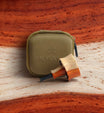


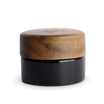
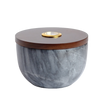
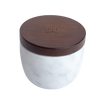
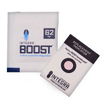
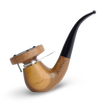





Leave a comment
All comments are moderated before being published.
This site is protected by hCaptcha and the hCaptcha Privacy Policy and Terms of Service apply.